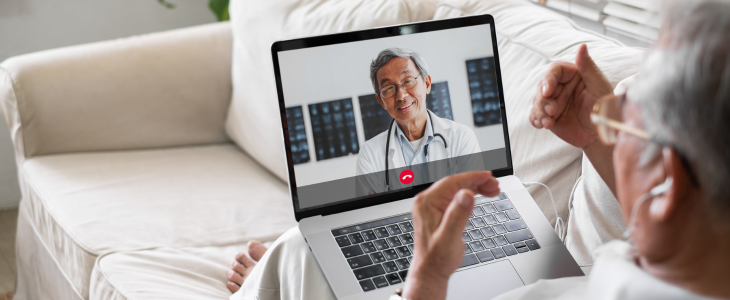Hypertension studies seek to advance digital health equity

July 1, 2024
Nearly 116 million Americans have hypertension, the most common cause of avoidable death and disability in the U.S. One evidence-based approach to better manage hypertension is at-home, self-monitoring of blood pressure. And it is of particular importance to conduct studies of home blood pressure monitoring among communities most impacted by hypertension, given that Black and Latino communities, those with low income, and those with limited proficiency in English are more likely to be diagnosed with hypertension or have uncontrolled hypertension.
Two studies are being conducted by researchers at the UC Davis Center for Healthcare Policy and Research (CHPR) to advance equity and improve access to hypertension treatment. Both studies are in partnership with UC San Francisco. In one study, called Championing Hypertension Remote Monitoring for Equity and Dissemination (CHARMED), researchers are assessing patient-facing and clinic-based strategies to equitably improve hypertension treatment and management. It is funded by the Patient-Centered Outcomes Research Institute (PCORI), and it will be enrolling 2500 patients across 25 safety net primary care clinics in San Francisco, Ventura, and Contra Costa counties. In a second study, called Remote Monitoring for Equity in Advancing Control of Hypertension (REACH), we are also testing patient support for home blood pressure monitoring, with the goal of varying clinical pharmacist outreach and support. REACH is funded by NIH and the National Institute of Heart, Lung and Blood Institute, and 540 patients will be enrolled.

All patients in these studies receive hypertension education and self-management support via text messaging, in either English or Spanish. They also get a remote blood pressure monitor that automatically sends readings to their physician via cellular transmission without Wi-Fi or Bluetooth connection. This makes it easier for patients who may not have access to, or experience with, technology to receive care and manage their condition. A companion mobile phone application also makes it easy for patients and their physicians to review blood pressure trends.
Patients served in safety net healthcare settings need interventions specifically designed and then implemented within their clinics,” said Courtney Lyles, co-principal investigator on the CHARMED study and director of CHPR. “We are ensuring both patient preferences as well as the workflows within safety net practices are considered to make an impact on the current inequities in hypertension outcomes.”
Led by Lyles, additional CHPR researchers working on the CHARMED and REACH studies include Melissa Gosdin, Kelcie Rodriguez, and Lina Tieu. Additional researchers from UC San Francisco are also working on the projects.
The Center for Healthcare Policy and Research’s mission is to facilitate research, promote education, and inform policy about health and health care. The goal is to improve the health of the public by contributing new knowledge about access, delivery, cost, quality and outcomes related to health care and providing rigorous evidence to policymakers and other stakeholders. CHPR executes its mission through interdisciplinary and collaborative research; education and career development; and research synthesis and dissemination.
